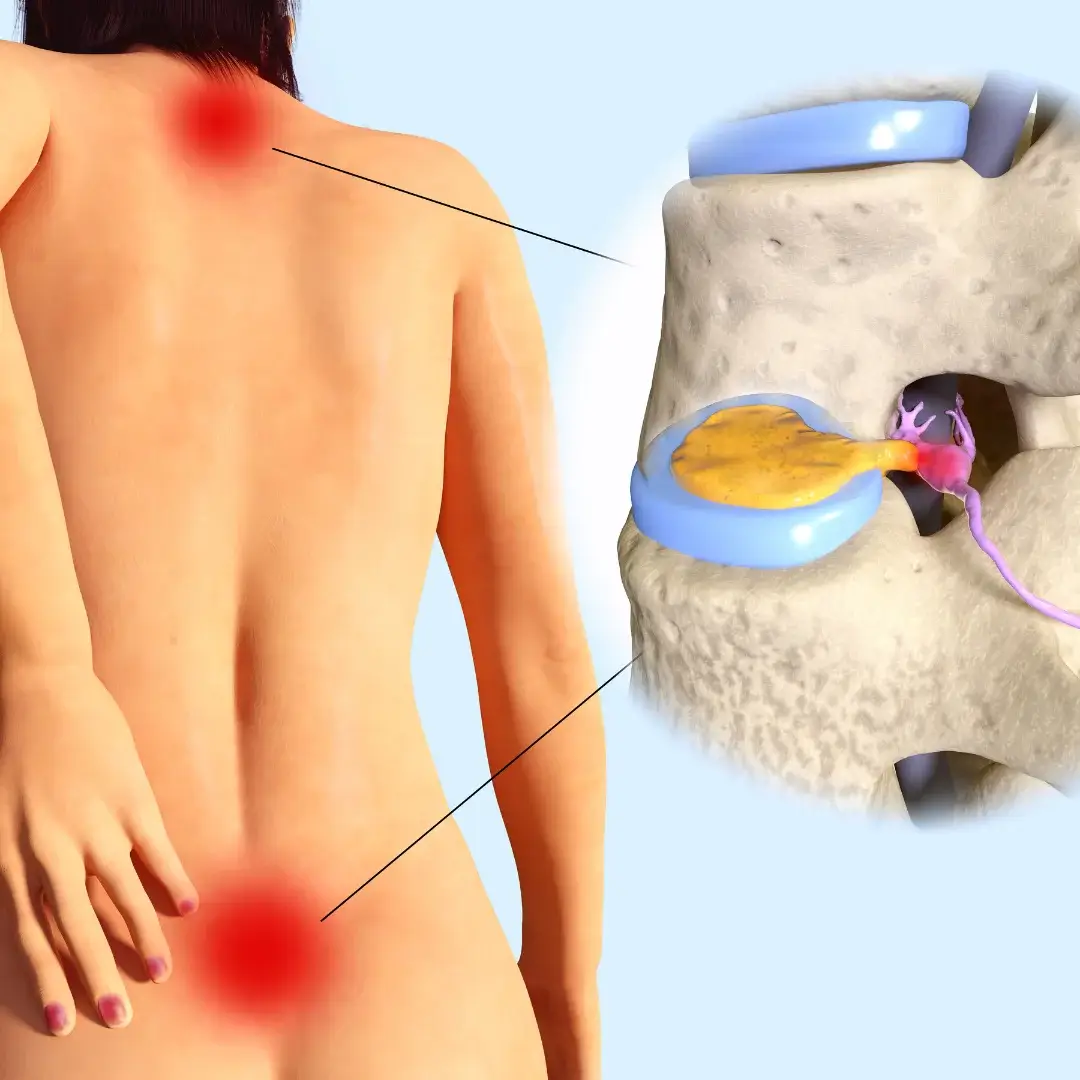Overview:
Disc protrusion, also known as a bulging disc, occurs when the soft inner material of an intervertebral disc pushes outward against the tough outer layer, potentially causing compression on nearby nerves. This condition can lead to pain, numbness, or weakness in the affected area.
Anatomy:
Intervertebral discs serve as cushions between the vertebrae of the spine, composed of a tough outer layer (annulus fibrosus) and a gel-like inner core (nucleus pulposus). Disc protrusion occurs when the nucleus pulposus bulges outwards through small tears or weaknesses in the annulus fibrosus.
Causes:
Factors contributing to disc protrusion include age-related degeneration, repetitive spinal stress, improper lifting techniques, or sudden trauma. These factors weaken the annulus fibrosus, increasing the risk of disc bulging or protrusion.
Symptoms:
Common symptoms of disc protrusion include:
- Localised back or neck pain.
- Radiating pain into the arms or legs.
- Numbness or tingling sensations.
- Muscle weakness or decreased reflexes.
Diagnosis and Tests:
Diagnosis involves a physical examination, medical history review, and diagnostic imaging such as MRI or CT scans to visualise the extent of disc protrusion and assess nerve compression.
Treatment:
Treatment options for disc protrusion may include:
- Conservative measures such as rest, physical therapy, and pain medications.
- Epidural steroid injections to reduce inflammation and alleviate pain.
- Minimally invasive procedures like percutaneous discectomy or laser therapy.
- Surgical intervention, such as discectomy or spinal fusion, for severe cases resistant to conservative treatments.
Prevention:
Preventive strategies include maintaining proper posture, practising safe lifting techniques, engaging in regular exercise to strengthen core muscles, and avoiding activities that place excessive strain on the spine.
Outlook / Prognosis:
With appropriate treatment and lifestyle modifications, many individuals experience significant improvement in symptoms associated with disc protrusion. However, long-term management may be necessary to prevent recurrence and maintain spinal health.
Living With:
Individuals with disc protrusion should work closely with healthcare providers to develop a tailored treatment plan that addresses their specific needs and goals. Adhering to recommended therapies and adopting preventive measures can help manage symptoms and improve overall quality of life.

